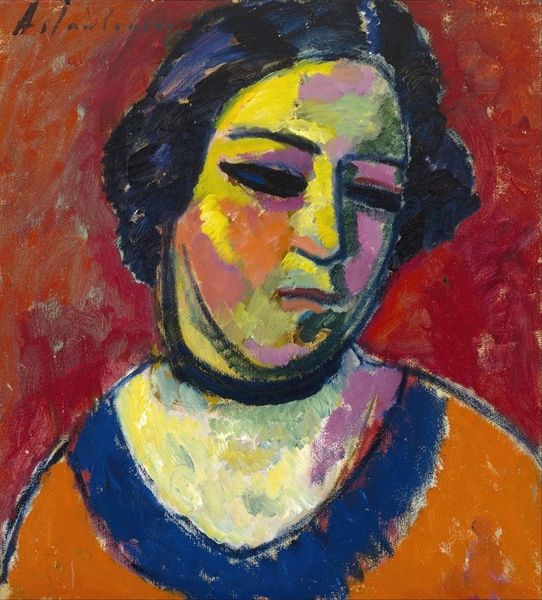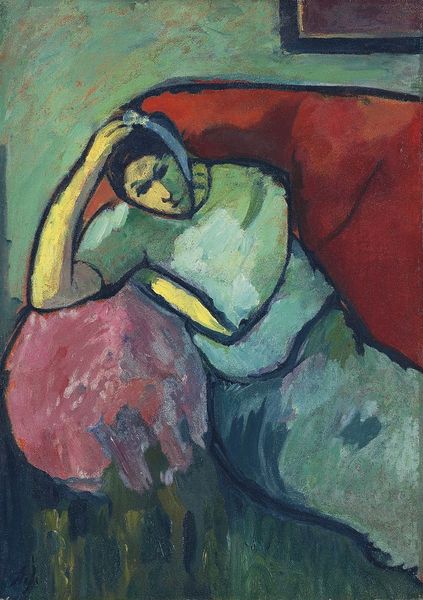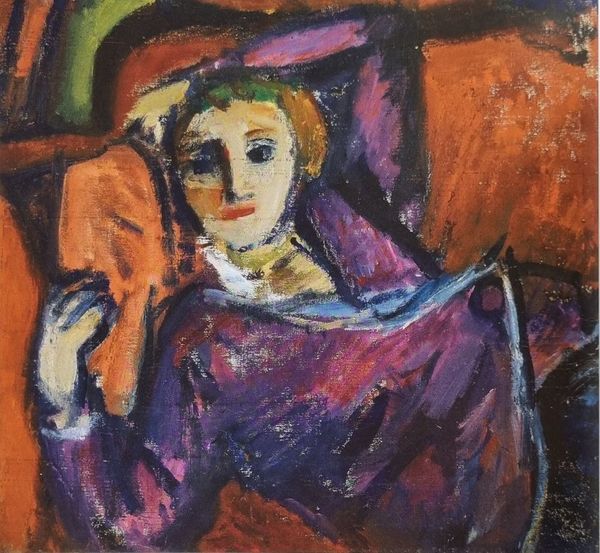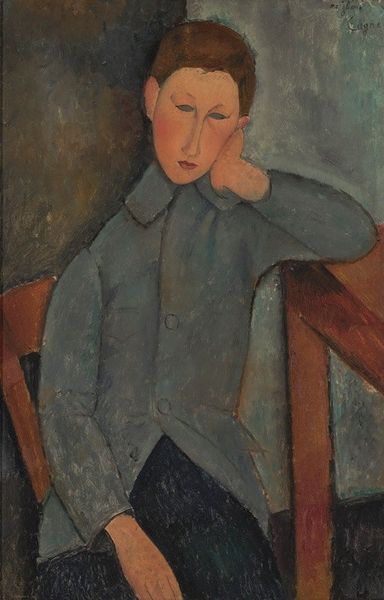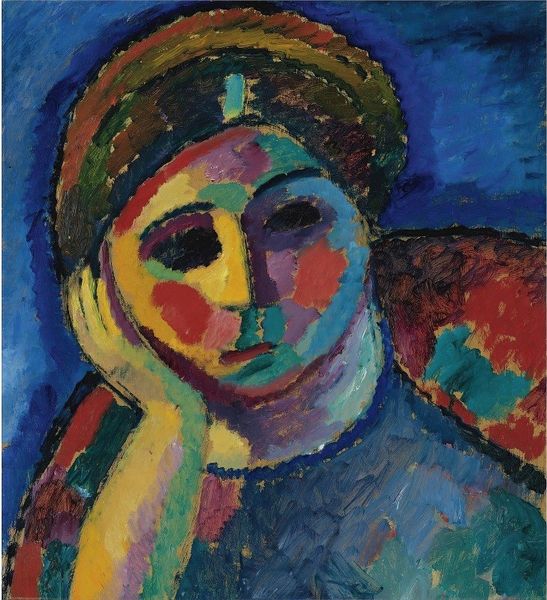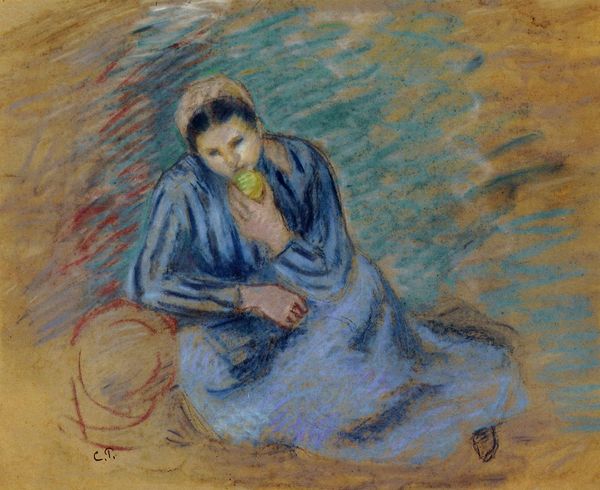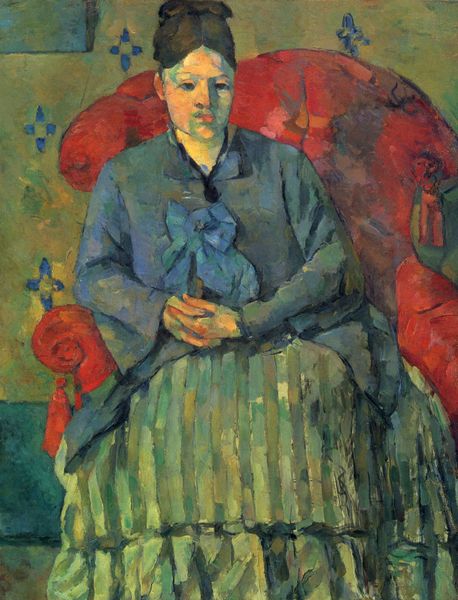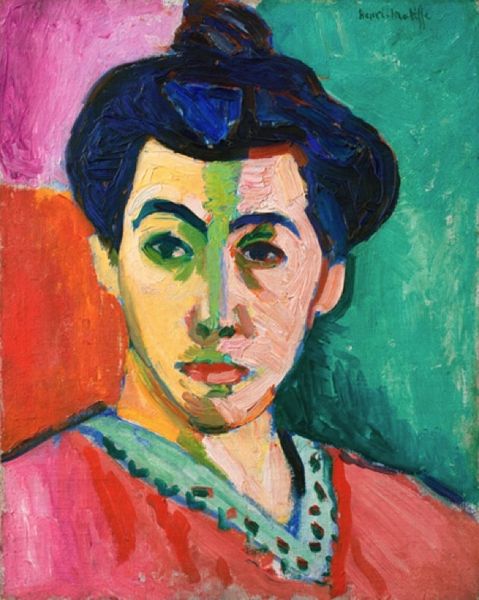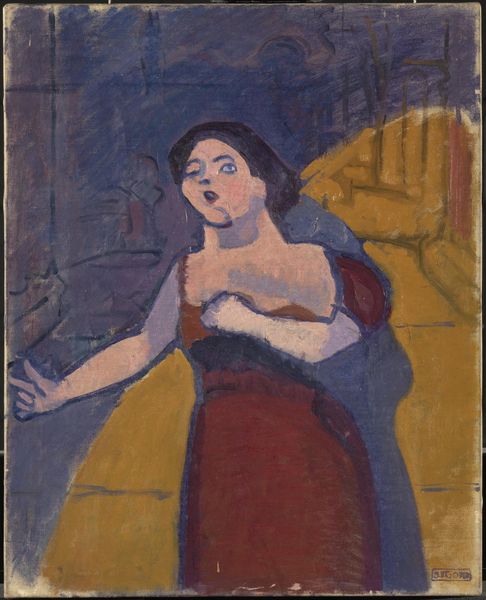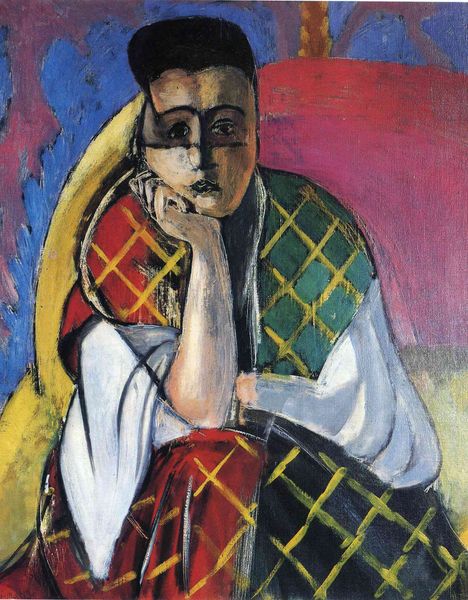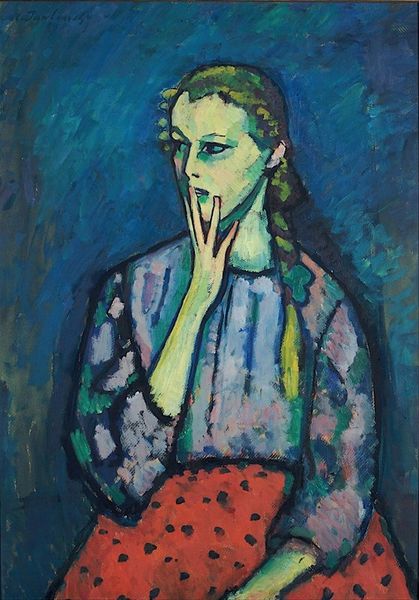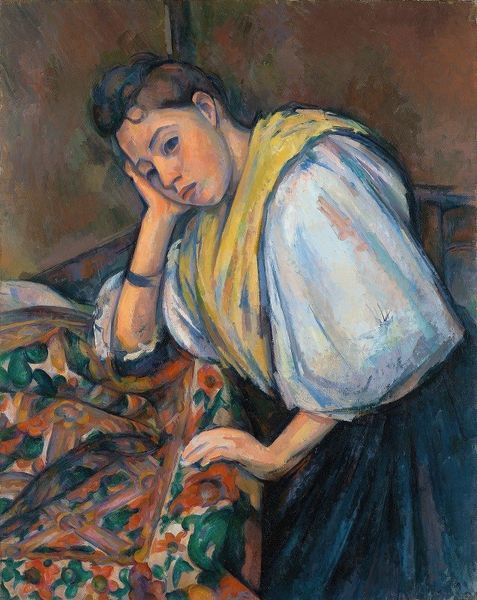
oil-paint
#
portrait
#
figurative
#
oil-paint
#
german-expressionism
#
oil painting
#
expressionism
#
portrait art
Copyright: Public Domain: Artvee
Editor: Alexej von Jawlensky's 1906 oil painting, "Kind Mit Gestütztem Kopf"—"Child with Head in Hand"—presents us with a contemplative figure. I'm struck by the visible brushstrokes and the almost melancholic mood. What can you tell me about it? Curator: Well, the painting is a quintessential example of early German Expressionism. Considering the socio-political context of early 20th century Germany, there's a sense of unease and a questioning of traditional values brewing just beneath the surface, which expressionism often reflects. This is the world moving towards the first World War. The visible brushstrokes you noticed contribute to this raw emotionality. How do you think that rawness plays into the politics of imagery? Editor: I hadn't thought about it that way, but the lack of polish makes it seem more honest, maybe even vulnerable, especially in contrast to academic portraiture. Did the emerging gallery system have anything to do with Expressionist artists working this way? Curator: Absolutely. Independent galleries, breaking from state-sponsored institutions, provided crucial platforms for exhibiting and validating such unconventional work. These galleries championed art that confronted the status quo. Furthermore, the subject being a child invites contemplation on the future, doesn't it? The youth embodies potential, but there’s also a hint of anxiety in their pose. Editor: So it's not just a portrait of a child, it’s a statement? I’m seeing it now. A rejection of academic styles. A quiet yet profound observation about society at a critical juncture. Curator: Exactly. It's a conversation with its time, reflecting and challenging the prevailing social currents through visual language. Editor: That adds a whole new dimension to it. I thought it was just a somber portrait, but it seems that it’s saying quite a lot about what was happening in the world. Thanks for helping me see that!
Comments
No comments
Be the first to comment and join the conversation on the ultimate creative platform.
